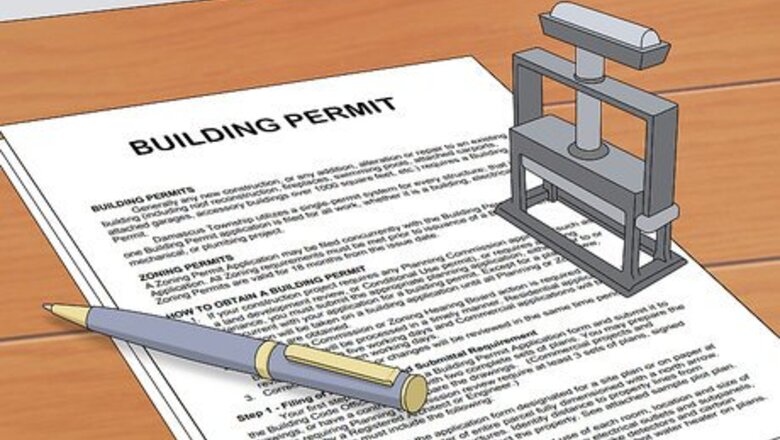
views
Planning Your Pool
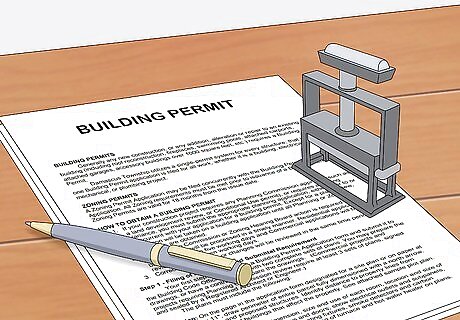
Obtain the necessary building permits. Your city will likely require you to have a residential building permit in order to put a swimming pool on your property. You can usually apply for a residential building permit on the website of your local Department of Building and Safety. In addition to granting you permission to construct a swimming pool, the residential building permit will outline the exact requirements and specifications of your new pool. There may be state or local guidelines that you have to follow for your pool, like how far it has to be from your property line. Don’t forget to also check your neighborhood’s homeowners association guidelines before moving forward with the installation—not all neighborhoods allow pools. Some municipalities may also expect you to have a separate electrical permit. However, the electrician you contract to take care of your pool’s inground wiring can often apply for an electrical permit on your behalf.
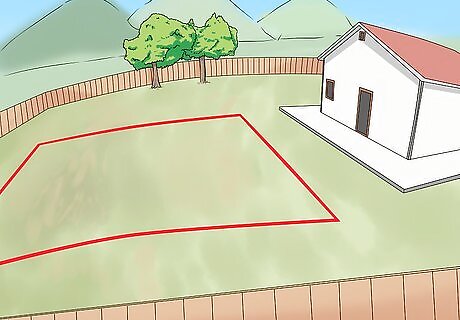
Pick out a suitable site for the pool. Designate a part of your property that would work best for your new pool. Swimming pools are typically found in the backyards of most homes, though you could also situate yours to one side if you have enough space to play with. Think carefully about where your pool will go. Installing a swimming pool in certain areas may require you to add or remove other outdoor features like trees or sections of fencing, which will drive up the cost of the project. You may have a limited number of options in regards to your pool’s overall dimensions, depending on where you decide to put it. You'll also need to make sure that the excavation equipment has access to the area where you want to dig your pool.
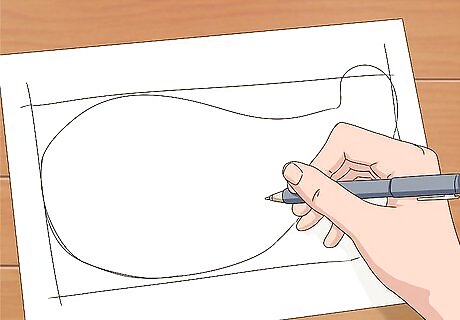
Come up with a basic design for your pool. Think about how you want your new pool to look. Would you prefer a round, square, or rectangular shape? How deep will it be? How many entrances and exits will it have? These are all important details that you'll need to discuss with your contractor before the project gets underway. Most home swimming pools come in standardized sizes like 10 feet (3.0 m) x 20 feet (6.1 m), 15 feet (4.6 m) x 30 feet (9.1 m), and 20 feet (6.1 m) x 40 feet (12 m), and may be anywhere from 4–15 feet (1.2–4.6 m) deep. Keep in mind that the more complex your pool design is, the higher the total cost will be.

Create the foundation of your pool with concrete to ensure that it's built to last. Most residential swimming pools are finished using 1 of 3 surfacing materials: poured concrete, fiberglass, or vinyl. Concrete is the strongest and most durable, but also the most expensive. It tends to be the best choice for large pools that are intended as a permanent addition to a home's exterior. If you expect your pool to receive heavy use, investing in a long-lasting material like concrete can cut down on the cost of repairs in the long run. A well-maintained concrete swimming pool can also add to the resale value of your home, in some cases.

Purchase a molded fiberglass pool for ease of installation. Fiberglass pools are most often sold as one-piece premade forms. This make them a breeze to put in, as all the building crew has to do after excavating your site is lower them into place and backfill around them. Fiberglass also offers the best balance of durability and affordability. For saltwater pools, you’ll want to go with fiberglass or vinyl lining, as salt can wear down concrete over time.
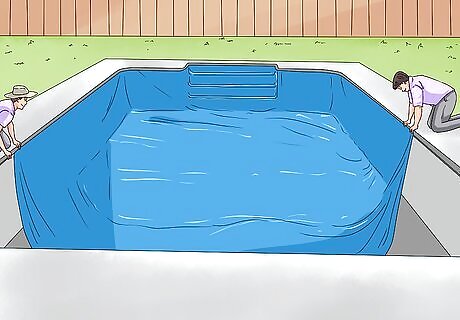
Go with a vinyl-lined pool if you want to spend less. Vinyl swimming pool liners are essentially large, smooth sheets that are shaped to fit the contours of the completed pool. They're by far the most economical option for finishing a home swimming pool. The major downside is that they wear out much faster than both fiberglass and concrete. Another disadvantage of vinyl pool liners is that they have a tendency to bubble, wrinkle, and pull loose. This means they may need regular adjusting in order to keep their attractive appearance. A vinyl-lined pool will only run you $25,000-50,000 on average, compared to poured concrete, which can cost upwards of $80,000-100,000.

Hire a pool contractor to bring your vision to life. Run a search for pool contractor companies in your area and compare your options carefully. You'll want to select a professional who holds a valid contractor's license signifying that they're qualified to install swimming pools. Experience building pools for at least several years is also a plus. Read reviews from homeowners who have used the contractor in the past to get a sense of what kind of work they do. The contractor you hire to put in your pool will charge a separate rate for labor, so don't forget to factor their pay into your initial budget.
Creating the Basic Structure

Excavate the area. Once you’ve hired a certified pool contractor, they’ll begin by marking off and digging up the ground on the site you’ve selected. To do this, they may need to use a backhoe and other heavy machinery. Excavation is one of the most important parts of the building process, as proper installation of other the pool’s other components depends on it being done right. The building crew make ask for your help making your property accessible to their equipment. It’s critical that you have your residential building permit on file at this point. Otherwise, you run the risk of damaging or unearthing utility lines you didn't know about.
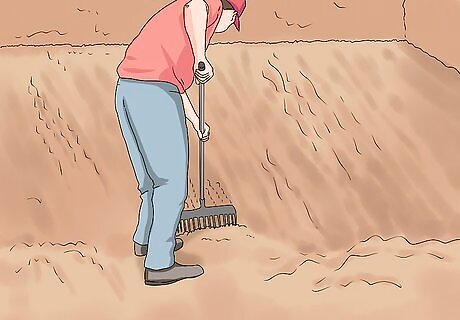
Grade the ground at the bottom of the hole. Once the site has been excavated, the next step is to even out what will become the floor of the pool as much as possible. This will involve covering the bottom surface with a thick layer of washed gravel subsoil, which is then raked and compressed until it’s perfectly level. There are a few different ways to grade a swimming pool. Some pools have flat bottoms, while others are built with sloping floors that establish a deep end and a shallow end. Be sure to tell your contractor which style you have in mind.
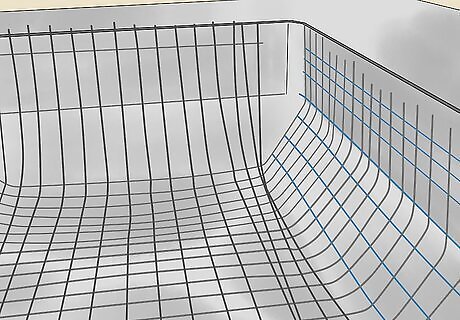
Frame the walls with steel supports. With the ground dug up and the bottom surface graded, you’re now ready to begin forming the sides of the pool. The building crew will go around the circumference of the hole setting metal rebar and wooden boards. These materials are used to create shape and provide support. Like the floor, it’s important that the walls of your new pool be flat, level, and in alignment with one another. It may be necessary to hire a separate steel subcontractor to frame the walls of your pool if your building contractor isn’t licensed or equipped to do so.
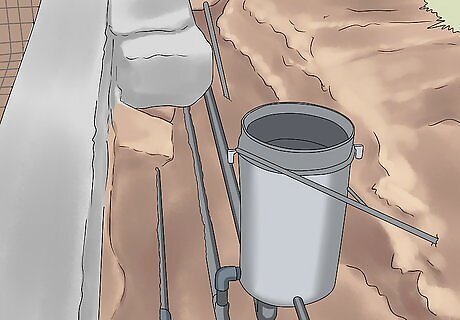
Install all necessary plumbing fixtures. At this point, you’ll need to bring in a licensed plumbing expert to set up the pool’s water circulation and filtration systems. This will include components like the drain, skimmers, 2- and 3-way valves, and the main pump that are responsible for filling, emptying, and moving water throughout the pool. Be sure to hire someone with extensive experience working on pools—an inexperienced plumber could make a mess of your new pool before it’s even finished. Note that plumbing systems may differ depending on the building codes where you live.
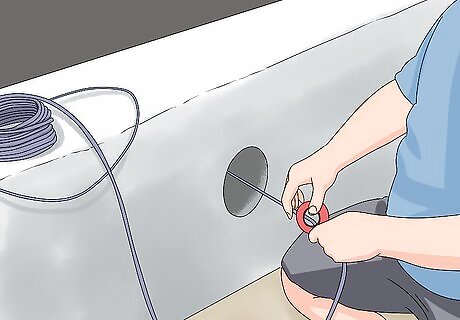
Wire the pool for electricity. Before the pool is lined, an electrical contractor will need to run power to your in order to power the filtration system and any underwater lighting elements you wish to include. This is another time when it’s important to secure the services of a professional, as bad wiring and water can be a dangerous combination. Ask your main building contractor for recommendations for trustworthy electricians that they’ve worked with in the past. Swimming pool electrical safety is a major concern. Faulty wiring could increase swimmers’ risk of electrical shock.
Lining the Pool
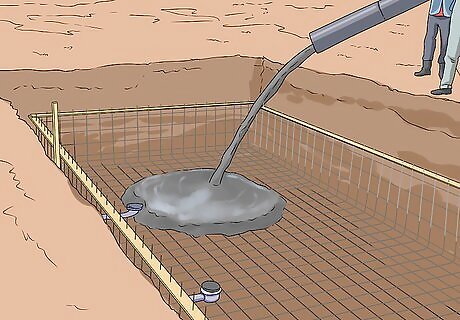
Pour the walls and floor if you’re putting in a concrete pool. With the plumbing and electrical fixtures in place, the building crew will use a concrete mixer to cover the steel forms set up along the interior of the pool. They’ll grade and smooth the concrete manually while it’s still wet. For pools with varying depths, it will be necessary to check that the angle of slope is consistent from one end to the other. The walls of concrete pools are typically finished with either cinder block or sprayed concrete. Your contractor might also install a plaster cap over the concrete so it has a nice finish. Concrete needs time to cure—typically about 28 days—so talk to your contractor about how long you need to wait before you do any more work on your pool.
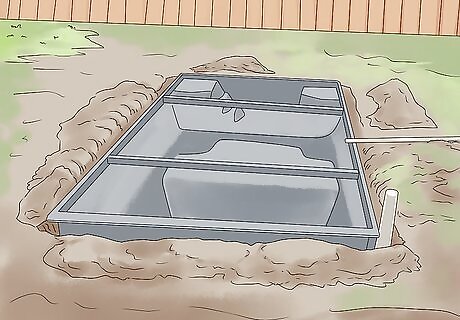
Have fiberglass pools set professionally. Most fiberglass pools come in a single-piece construction. If you picked out a premade fiberglass pool for your yard, it will need to be put in place using a crane or similar piece of equipment. Afterwards, the building crew will fill in the space around the pool with dirt or concrete. In some cases, fiberglass liners are installed by spraying the fiberglass material onto an existing frame rather than setting a premade pool in one piece.
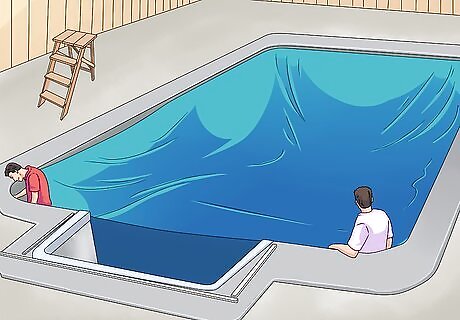
Fit vinyl pools with a flexible liner. Vinyl liners can only be installed after the concrete base has been poured and given 1-2 full days to dry. The installers will unroll the one-piece vinyl sheet and stretch it out to cover the entire inner surface of the pool. They’ll then attach it by securing the built-in liner tack around the outer edges and insert a vacuum nozzle to suction out the air between the liner and the walls of the pool. Before installing the liner, the building crew will need to mark and cut out holes for the lights, skimmers, and any other fixtures on the pool’s interior. Vinyl liners are often easy enough to put in yourself, although having the assistance of a professional will ensure that installation is carried out correctly and efficiently.
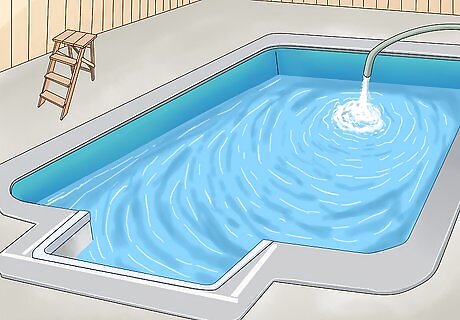
Fill up the pool. With the construction complete, all that’s left to do is add water! Depending on how eager you are to take your first dip, you could run the water slowly using a hose connected to your home’s water supply, or rent a water truck to top it off in less time. Filling a swimming pool with a single water hose can be an all day (maybe even all night) event. When you rent a water truck, the water will be dispensed into your pool via multiple hoses to fill it much faster. While filling your new pool, check for leaks, plumbing malfunctions, or other complications. If you discover an issue, contact the building contractor to schedule repairs before you use the pool.
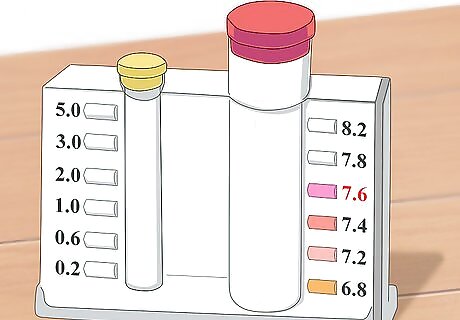
Treat your pool with the necessary chemicals. Use a home water testing kit to find the pH of the water in your pool. Then, add chlorine and other chemicals like shock and algaecide as needed to bring it to the recommended levels for safe swimming. The ideal pH for the water in a swimming pool is 7.4-7.6, or just above neutral. It usually takes about 10 days for the pH and chlorine levels in your pool to balance out. You can pick up a water testing kit anywhere that sells pool supplies. The exact amount of chlorine you'll need will depend on the volume of your pool. If you're unsure how much to add, contact a pool maintenance company for assistance. If you're planning on having a salt water pool, you'll add the salt (along with the correct proportions of other chemicals) after the pool has been filled.


















Comments
0 comment